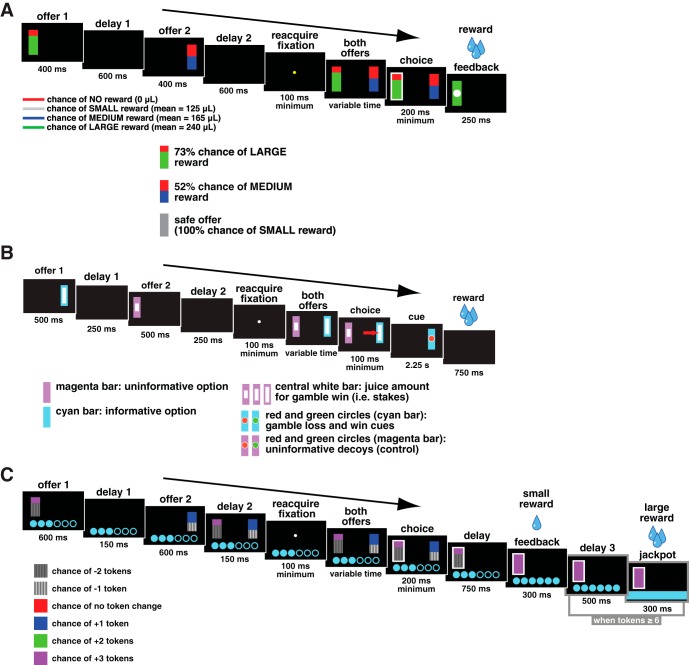Fig. 2.
Timeline of behavioral tasks. A: risky choice task. Two options were presented, each offering a gamble for water reward. Each gamble was represented by a rectangle, some proportion of which was grey, blue, or green, signifying a small, medium, or large reward respectively. The size of this colored region indicated the probability that choosing that offer would yield the corresponding reward. B: curiosity gambling task. Two offers appeared in sequence, each followed by a blank period. The monkey then had to fixate a central target. The 2 options then reappeared and the monkey chose 1 by shifting gaze to it. Then a cue appeared indicating either gamble win, loss, or uncertainty. Following a 2.25-s delay, the monkey obtained the outcome. Magenta and cyan bars indicated uninformative and informative outcomes, respectively. Inscribed white rectangle indicated gamble stakes. Inscribed red and green circles indicated cue. C: token risky choice task. Two options were presented, each offering a gamble for tokens. The size of each colored region within each offer indicated the probability that choosing that offer would yield the corresponding outcome. A small reward was administered for each completed trial. When at least 6 tokens were earned, a large “jackpot” reward was administered and the earned token count was reset to 0.

